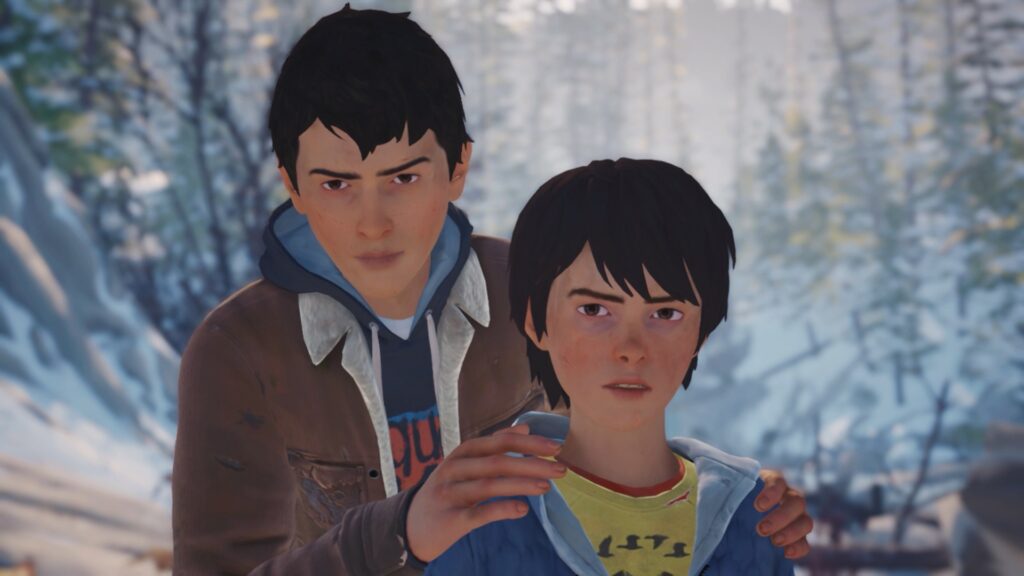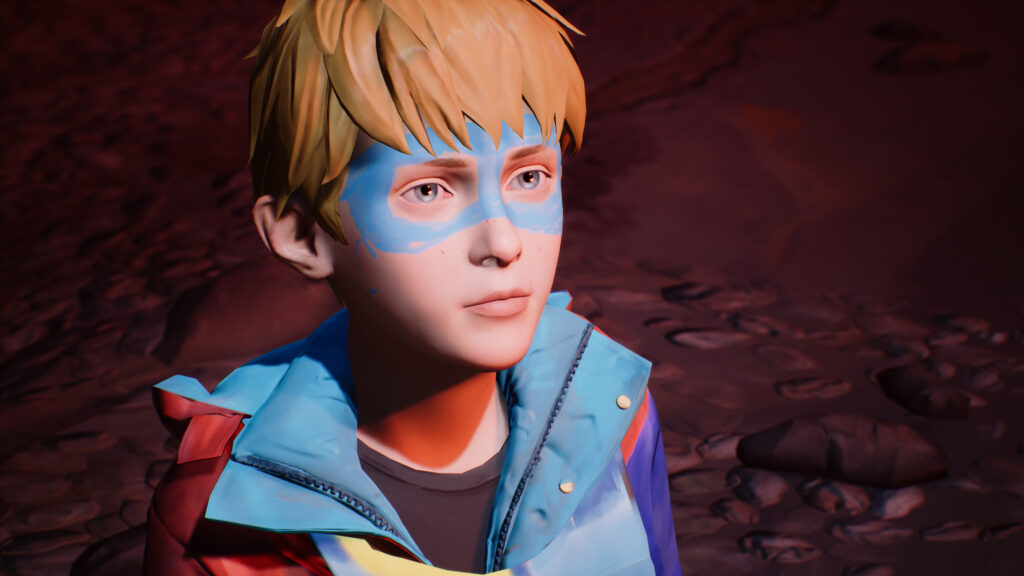
Life is Strange 2 (developed by Dontnod Entertainment) exists within the same universe as the first Life is Strange, but presents a different set of characters. Like the first game, the player interacts with people and objects in the world and makes choices that affect the final outcome of the narrative — but the impact of those choices feel so much more weighty here.
What fascinates me about the gameplay in Life is Strange 2 is that the game positions what might otherwise be the sidekick to the main character as the main character. Sean Diaz (in his teens) is the older brother to Daniel (9 years old). When a confrontation with a racist neighbor leads to a cop shooting their father and a strange explosion, Sean takes his brother on the run with the aim of reaching their father’s property in Mexico. Eventually, the two brothers come to realize that Daniel has telekinetic powers — and Sean is forced to make choices to protect his brother and help guide him through the world.
Playing as Sean, the player does not have direct access to the use of these powers. Instead, the player has the option to instruct Daniel if and when to use his powers and how to use them (to save or harm others). These interactions, combined with a variety of other smaller choices (such as whether or not to steal, beg for food, allow Daniel to curse, etc.), impact Daniel’s sense of morality and how he sees the world.

The gameplay, in other words, is basically parenting — or the closest that a big brother can get to it in woefully difficult circumstances. Sean makes sacrifices to take care of his brother, with all of his focus on his brother’s health and happiness, except in rare moments when he is able to have some space and friends to himself.
Many games operate under the illusion of choice, balancing the need to grant the player interactivity and options and the need to maintain a cohesive and meaningful storyline. While playing Life is Strange 2, I assumed that the outcomes were mostly inevitable, with the choices being mostly about emotional impact. And I wasn’t entirely wrong about that. There are certainly choke points that hold up the narrative structure and keep events moving forward — but after looking into alternative outcomes to various events in the game, I discovered more variety than I realized. There are some significant differences in how events can turn out, some better and some far, far worse. In addition, there are multiple endings (good or bad), depending on the choices made and how Sean guides his brother’s moral compass.
In the grand scheme of things, I believe my play through may have been the best possible outcome — at least, it’s the best outcome considering these characters exist in a world that is unfair and unjust. I thoroughly enjoyed Life is Strange 2, and I would argue that it is one of the most impactful games in the Life is Strange series.

The Awesome Adventures of Captain Spirit is a free demo for Life is Strange 2, and features one of the side characters who appears in Episode 2 of the main story. Chris is a young boy, who escapes the hard reality of his life (the death of his mom and his alcoholic dad) by escaping into the fantasy of being a superhero. During the gameplay, Chris puts together his superhero costume as Captain Spirit, helps with chores around the house, explores his backyard, and plays a variety of games. Some of the most compelling moments are when the player is able to activate Chris’ imagination and pretend to use his powers or when he transports himself into an imaginary world, where he can battle evil. While this demo does not have any direct impact on the main storyline, playing it does provide deeper insights into the character, revealing background information that the player wouldn’t know without having played the demo first.
I also jumped back into God of War (Sony’s Santa Monica Studio) this month with the idea that I would mainline the story, so that I could move on to the sequel. After getting back into the rhythm of the gameplay, however, I found myself getting excited about exploration of this beautiful mythological world all over again. So, yeah, I’m back into it and loving the experience. Every father-son moment grabs me with its humor and/or pathos; it’s just such a good story and game.
Getting Over It continues to be the bane of my gameplay experience. I mean, I’m still really stuck at the same spot, but I’ve advanced a few inches and it’s enough to make me think that I could possibly maybe get past this aspect of the challenge. It gives me enough hope to keep going — for now.
In the realm of little indie projects, “House of Poems” is a small Twine game developed by Kyra Jaeger, which plays in browser and takes 10-15 minutes (ish) to complete. The interactive story is presented in poetic form, inviting the player into an ethereal fantasy that leads them on a journey into discovering witchyness and their own personal power.
If you’d like to know about the rest of recent culture I consumed, including books and TV, you can check out my Culture Consumption for January.